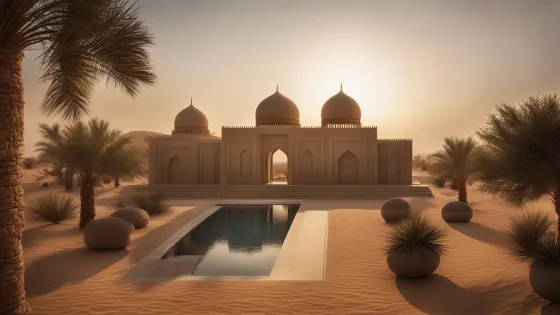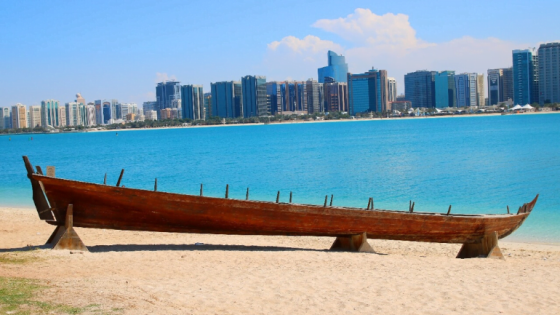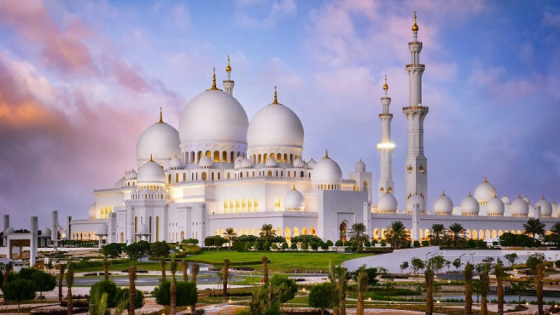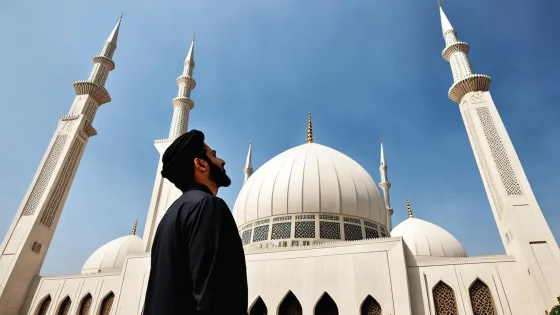Contents
- 1 Embarking on a Journey to Abu Dhabi’s Historical Core
- 2 Diving into the Maritime History of Abu Dhabi
- 3 Al Ain: Exploring the Birthplace of Emirati Culture
- 4 Unearthing the Secrets of Bronze Age in the UAE
- 5 UAE Ancient Landmarks Tour: Tracing the Hues of History
- 6 Discover the Animals Integral to Emirati Heritage
- 7 Conclusion
- 8 FAQ
- 8.1 What can I expect from a UAE ancient landmarks tour?
- 8.2 What is the significance of Qasr Al Hosn in Abu Dhabi’s history?
- 8.3 Can I participate in traditional crafts at the House of Artisans?
- 8.4 What role does pearl diving play in UAE’s maritime history?
- 8.5 What makes Al Ain a crucial part of Emirati culture?
- 8.6 Why is the Hili Archaeological Park important for understanding the UAE’s Bronze Age history?
- 8.7 What historic treasures are found on Sir Bani Yas Island?
- 8.8 What is the historic significance of the Rub’ al Khali desert?
- 8.9 How have animals contributed to Emirati heritage and culture?
Embark on a journey that transcends the contemporary allure of skyscrapers and lavish cityscapes to uncover the historical riches of the United Arab Emirates. Your UAE heritage exploration will take you to Abu Dhabi, a beacon that illuminates the traces of ancient civilizations, revealing a city shaped by Bronze Age settlers and resilient Bedouin traders who once roamed the legendary Silk Road. As you dive into an Emirates historic tour, the captivating tales of fortresses, oasis settlements, and timeless traditions await to transport you through the UAE’s storied past.
Abu Dhabi, a city born from folklore and named for the graceful gazelle, bloomed from a simple settlement by a freshwater spring to a vibrant capital rich in tradition and cultural vibrancy. By visiting the historical sites in UAE, you will encounter the depths of history where the Bani Yas tribes once settled in the 1700s, laying the foundation for a dynasty that characterizes the region’s evolution today. Your odyssey through the UAE ancient landmarks tour promises a wealth of narratives etched into the very soil and architecture of the land. Delve into the enigma that is Abu Dhabi and embrace the chronicles of its ancestors.
Key Takeaways
- Experience the foundation of Abu Dhabi’s history with an exploration of its Bronze Age origins.
- Unravel the stories of Bedouin traders who skillfully navigated the Silk Road across harsh deserts.
- Discover the historical significance of the Bani Yas tribe and its connection to Abu Dhabi’s ruling family.
- Witness the transformation of Abu Dhabi from a modest settlement to a grand city of cultural heritage.
- Connect with history by visiting remarkable sites that showcase the UAE’s journey through time.
- Lose yourself in the traditional tapestry that is woven into the Emirati landscape.
Embarking on a Journey to Abu Dhabi’s Historical Core
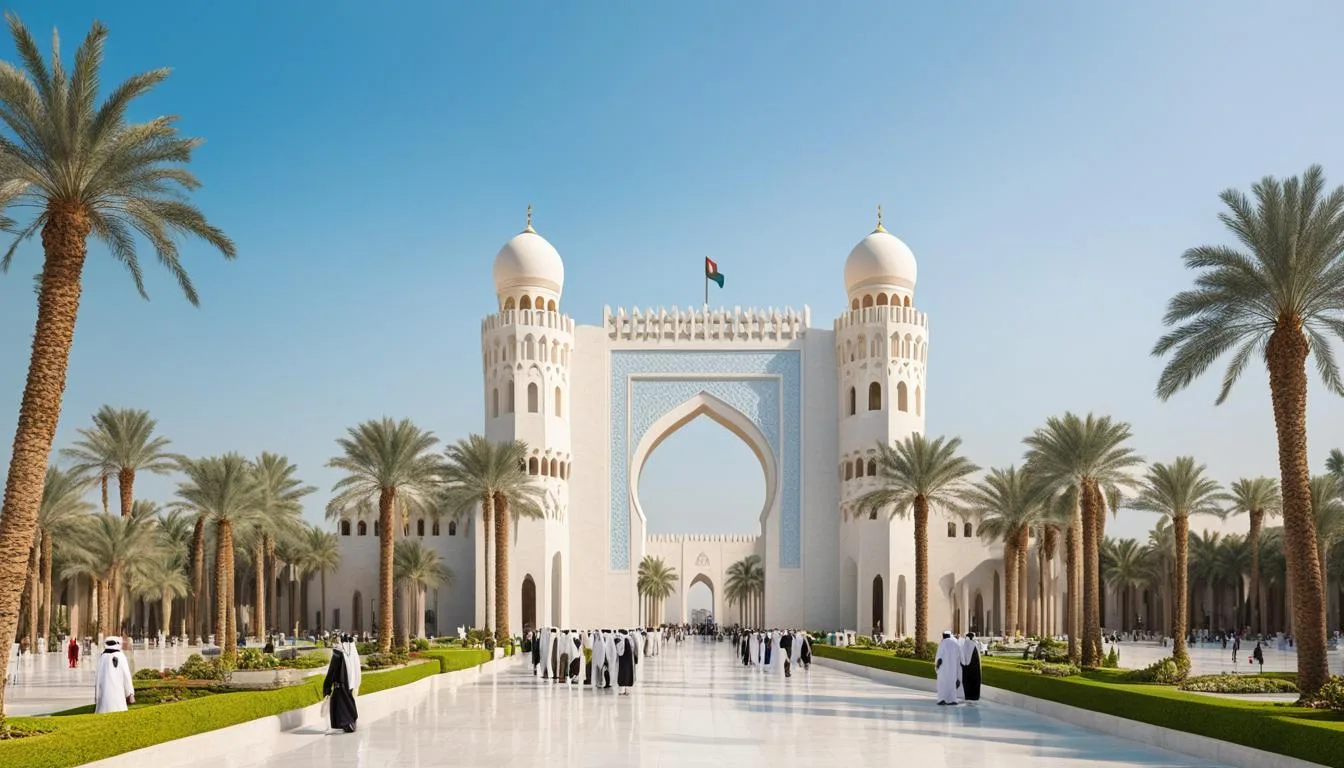
Discover the stunning ancient landmarks in Abu Dhabi, where every stone and every structure narrates a saga of the bygone eras. At the heart of this historical introspection is Qasr Al Hosn, the oldest kernel in the city, seamlessly blending the past with the present.
Qasr Al Hosn: A Symbol of Heritage
The imposing edifice of Qasr Al Hosn is an exhibition in resilience and architectural grandeur. It encapsulates the journey of Abu Dhabi, safeguarding narratives of times when the emirate was but a pearl in the ocean of deserts. A sentinel, a home, a governance hall, and now a museum, this fortification stands as a testimony to the multifaceted history of the UAE.
Bearing the hallmark of UAE traditional architecture, the imposing watchtower built in 1760 was erected to safeguard the burgeoning Bani Yas community. Today, Qasr Al Hosn invites you to walk through the episodes of transformation, from humble settlements to the sky-kissing capital that Abu Dhabi is today.
Witnessing Bedouin Traditions at the House of Artisans
Adjacent to the grandeur of Qasr Al Hosn is the quaint House of Artisans — where the heart of Emirati culture continues to beat. Here, the ancestral crafts of the Bedouin are not just displayed but live and breathing. As you step into the expanse of creativity, the Sadu weaving greets you, its intricate patterns narrating stories of nomadic elegance and artistic ingenuity.
Each pattern woven from the desert’s bounty – the wool of the camels, goats, and sheep – paints a rich tapestry of life and survival. The art of Khoos palm-leaf weaving unfolds before your eyes, showcasing the practical beauty crafted from nature’s offerings. Participate in the Bait Al Gahwa coffee ceremony and sip on the brew of the centuries, enveloped by the aroma of tradition seeping into the present.
Through these experiences, the legacy of the people who’ve shaped the emirate with their hands and hearts come alive, inviting you to not just observe but to immerse yourself in the living history of ancient landmarks in Abu Dhabi.
Diving into the Maritime History of Abu Dhabi
As you venture into the UAE’s maritime history, the legacy of pearl diving in Abu Dhabi offers a glimpse into the economic foundations of this thriving city. The surrounding sea has served as a crucial source of livelihood for generations through the industry of pearling, fostering a community deeply connected to the water’s edge.
Traditional wooden dhows, reminiscent of a storied past, line the ports of Abu Dhabi—a testament to the skilled craftsmen who forged these vessels with a precision that carried the emirate’s ancestors across waves in search of maritime treasures. These are not mere relics; they are symbols of endurance and ingenuity that have stood the test of time in Emirati culture.
Engaging in Emirates historic tours that include pearl-diving excursions transports you to the age of Ghous Al Kabir, the summer journey that was the centerpiece of a pearler’s year. It’s not just about witnessing the actual dive—it’s about experiencing the culture. You will be amidst the singing of traditional sea-faring songs, the vivid storytelling of the deep, and the intellectual workings of ancient pearl-diving techniques that charted the course of this region’s impressive maritime saga.
Every dhow’s return was a fiesta of the sea—a harmonious fusion of family, tradition, and celebration—with songs ascending from the docks, houses adorned in festive décor, and communal feasts that tied the fortunes of the sea to the joys of the shore.
These historical immersions not only honor the past but also pave an understanding of the continuity and evolution of UAE maritime history, allowing us to trace the ripples of time right up to the modern-day success of Abu Dhabi.
Al Ain: Exploring the Birthplace of Emirati Culture
Al Ain, known as the garden city of the UAE, holds a unique position as the cradle of Emirati civilization. As you wander through its ancient walkways, you will be captivated by the stories these lands whisper to those who listen. Protected beneath UNESCO’s wing, Al Ain’s oases and forts are not just tourist destinations but meaningful links to a past where tradition and adaptation lived in harmony.
Marvel at the Al Ain Oasis and Ancient Falaj
The serene Al Ain Oasis is a sight to behold, with over 147,000 date palms casting shadows on pathways cooled by the traditional falaj irrigation system. An ingenious testament to the sustainable practices of early settlers, these water channels form a life-giving matrix that has fed the culture and growth of this region for millennia. The Oasis not only offers relief from the desert heat but also stands as a living museum to the agricultural prowess of ancient inhabitants.
Cultural Immersion at Al Jahili Fort and Qasr Al Muwaiji
Your journey through Emirati history continues at the Al Jahili Fort, a bastion established in the late 19th century. Originally designed to protect the city and its palm groves, the fort now showcases exhibitions, including the famed photographs of Sir Wilfred Thesiger, a British explorer enamored with the UAE’s deserts. Walking through its robust walls, you’re not just seeing a military installation—you’re stepping into a gallery of cultural resilience.
Not far from the fortifications of Al Jahili is Qasr Al Muwaiji, the birthplace of His Highness Sheikh Khalifa bin Zayed Al Nahyan. He spent his early years learning under the tutelage of his father, the UAE’s Founding Father, Sheikh Zayed bin Sultan Al Nahyan. Through thoughtful preservation, Qasr Al Muwaiji now serves as a window into the personal histories that have shaped the leadership and direction of the UAE through the ages.
In these historic sites of Al Ain, amid the shaded walkways and aged fort walls, you will touch the fabric of Emirati culture and history, woven intricately with the threads of survival, innovation, and sovereignty.
Unearthing the Secrets of Bronze Age in the UAE
Delve into the heart of the UAE’s bronze age history at the Hili Archaeological Park, a treasure trove of ancient wonders near Al Ain. You’re about to step back in time, exploring a landscape where communities from the Bronze Age established their roots. The park’s centerpiece, the grandiose Hili Grand Tomb, showcases the intricate communal life from as early as 2500BCE. The significance of these sites extends beyond their age, as they depict the sophisticated socio-economic structure of early settlers in the region.
In stark contrast to the lush oases, the Jebel Hafit Desert Park offers a starkly beautiful glimpse into an era marked by ingenuity and resilience. Beehive-shaped tombs emerge from the golden sands, whispering tales of their origins between 3200 BCE and 2700 BCE. Your exploration will unearth artifacts that tell a story of ancient global trade routes connecting the UAE with civilizations across Mesopotamia, Iran, and the Indus Valley.
| Historical Site | Period | Cultural Insights | Key Artifacts |
|---|---|---|---|
| Hili Grand Tomb | Umm an-Nar period (2500-2000 BCE) | Evidence of structured community life and agricultural practices. | Bronze Age pottery and jewelry. |
| Jebel Hafit Desert Park Tombs | 3200-2700 BCE | Depict early burial practices and beehive tomb architecture. | Pottery, beads, and daggers representing trade with ancient civilizations. |
| Falaj Irrigation Systems | Iron Age | Showcases ancient farming techniques and sustainable water use. | Networks of water channels carved through the desert landscape. |
As you explore these historical sites in UAE, consider the vast timeline these artifacts and structures encompass. Bear witness to the ancient engineering marvels like the falaj irrigation systems, and let the grooves of history guide you through the layers of time. Step into the past with reverence, as you connect with the ancient spirits that once roamed the same grounds, turning arid deserts into thriving pockets of civilization.
Experience the ancient world where the very foundations of modern Emirati society were laid, in the shadow of beehive tombs and amidst the ruins of historical forts, under the boughs of date palms nurtured by age-old falaj. Here, in the silent chorus of the UAE’s Bronze Age reliquary, your understanding of this region’s profound lineage will deepen.
UAE Ancient Landmarks Tour: Tracing the Hues of History
As your UAE ancient landmarks tour unfurls the vivid tapestry of the past, you venture beyond the modern skyline of Dubai and the cultural mosaic of Sharjah, delving into the heart of the emirates’ rich history. The journey leads you from bustling cities to tranquil islands and the mystical expanse of the desert, each carrying echoes of bygone epochs that resonate through time.
Sir Bani Yas Island: A Timeline of Diversity
On the tranquil shores of Sir Bani Yas Island, history whispers tales of diversity and contact with far-reaching cultures. Once referenced by Gasparo Balbi, the Venetian gem seeker, for its bountiful pearls, the island today stands as a testament to religious tolerance with its ancient Christian monastery dating back to the 7th century. Discover the serenity of this wildlife haven and piece together the narrative of a diverse past that has shaped the rich tapestry of the UAE.
The Mystique of the Rub’ al Khali Desert and its Historic Significance
Your Dubai historical landmarks tour would be incomplete without experiencing the awe-inspiring Rub’ al Khali desert. Known as the Empty Quarter, this vast terrain unravels a story of survival and trade as part of the historic Silk Road. Trek across the largest uninterrupted sand mass on Earth and immerse yourself in the solitude that has entranced travelers for millennia, a timeless ode to the caravans that once wove the threads of ancient commerce across continents.
- Uncover the past of Sir Bani Yas Island, a jewel in the tapestry of the UAE’s heritage.
- Witness the Sharjah cultural heritage that complements the region’s historical allure.
- Be captivated by the stories of the Rub’ al Khali desert, a defining feature of the UAE’s landscape.
Discover the Animals Integral to Emirati Heritage
The affluent tale of the United Arab Emirates is not merely a narrative of human endeavor but also of the esteemed animal companions that have long shaped the region’s destiny. Among the dunes and date palms, the story of the emirate’s evolution unfolds—a story in which camels, Saluki dogs, and falcons emerge as pivotal figures in the annals of UAE culture and history. Every step through the deserts of Abu Dhabi allows you to encounter the indelible hoofprints and feathers that tell a tale of survival, partnership, and tradition.
Falconry, a practice esteemed within Bedouin traditions, harnesses the sheer prowess and grace of these winged hunters. Mastering the sky, falcons became much more than hunting aids; they embodied the Bedouins’ respect for the natural world and shared in the triumphs and tribulations of desert life. As a craft entwined with cultural identity, falconry’s inscription on UNESCO’s Representative List of the Intangible Cultural Heritage of Humanity in 2016 stands as a testament to its historic and contemporary relevance.
In parallel, the Saluki, a breed whose sleek form and agility have been captured in the art and literature of the Middle East, has carved its niche in the history of an ancient yet ever-evolving land. With a legacy that dates back over 5,000 years, Saluki dogs have sprinted through the annals of time, not merely as hunters but as guardians of nomadic secrets and untold Bedouin legends. These animals, revered for their speed and intelligence, continue to be celebrated facets of UAE’s living heritage.
Understanding the symbiotic bond shared between the people of the UAE and these extraordinary animals opens a window into the region’s soul. In the echoes of falcons’ cries and within the Saluki’s silent gaze, one connects with the essence of Emirati life—a life steeped in history but bounding gracefully towards modernity. Today, you are invited to witness the grandeur of these traditional animal partners amidst the shifting sands and to recognize their enduring roles in shaping the bedrock of UAE heritage.
The Saluki, a peerless hunter beneath the sky’s expanse, and the falcon, soaring with the winds of tradition—both are more than mere animals; they are incarnations of a culture’s resilience and grandeur.
- Trace the heritage of falconry, a centuries-old Bedouin practice, now honored by UNESCO.
- Explore the connection between the indigenous Saluki breed and their historic role in desert subsistence.
- Recognize the unique companionship between man and beast that has helped shape the narrative of UAE’s cultural history.
Conclusion
Your voyage through the UAE’s past encapsulates a rich tapestry of experiences, each highlighting the dynamic saga of the Emirates. From the weathered stones of ancient landmarks in Abu Dhabi to the sweeping dunes of the majestic Rub’ al Khali, the UAE heritage exploration offers tales of endurance, prosperity, and cultural convergence that few places on Earth can muster. This journey is not merely about observing; it’s about engaging with the soul of a region defined by its seminal role at the crossroads of civilizations.
Embarking on the UAE Culture and History Recap
As you recount the steps of your UAE ancient landmarks tour, you’ll find your memories interwoven with the legacy of Bedouin traders and the splendor of monarchs. Emirates historic tours have ushered you into the heart of heritage sites that tell the story of a land evolving from bronze-tinted beginnings to today’s urban spectacle. Your journey has unlocked a world where tradition and modernity co-exist, offering a lens through which to appreciate the intricate fabric of the UAE. The forts, palaces, and the time-honored customs you’ve encountered are not mere remnants but vibrant chapters in an ongoing narrative.
Planning Your Next Historical Adventure in the Emirates
With the echoes of ancient footsteps still resonating, your next chapter awaits. Whether catalyzed by the sheer magnitude of Al Jahili Fort or the elegance of the House of Artisans, you’re now armed with insights to delve deeper into the Emirates’ storied past. Your next Emirates historic tours might find you navigating Al Ain’s falaj network or tracing the maritime routes once sailed by pearling dhows. Each corner of the UAE extends an invitation to discover more, to connect with the land and its stories, and to continue crafting your unique anthology of travels within this historical haven.
FAQ
What can I expect from a UAE ancient landmarks tour?
You can expect a journey through time, exploring historical sites in the UAE that showcase the country’s rich heritage, traditional architecture, and vibrant history. These tours give you a firsthand experience of the UAE’s culture from its early civilizations to its present-day status.
What is the significance of Qasr Al Hosn in Abu Dhabi’s history?
Qasr Al Hosn is the oldest stone building in Abu Dhabi, originally serving as a watchtower for the Bani Yas tribe in the 18th century. It symbolizes the emirate’s evolution, showcasing its transformation from a simple fishing village to a modern city. Today, it stands as a museum, reflecting Abu Dhabi’s historical journey.
Can I participate in traditional crafts at the House of Artisans?
Yes, at the House of Artisans, you can witness and even take part in traditional Emirati crafts such as Sadu weaving, Khoos palm-leaf weaving, and the Bait Al Gahwa coffee ceremony. These immersive activities provide deeper insight into Bedouin traditions and UAE’s rich cultural tapestry.
What role does pearl diving play in UAE’s maritime history?
Pearl diving was a significant part of Abu Dhabi’s economy and maritime history. The traditional wooden dhows and the pearling fleets reflect the historical importance of the sea in the emirate’s development. Tours often include demonstrations or interactive experiences to educate visitors on this historical trade.
What makes Al Ain a crucial part of Emirati culture?
Al Ain, recognized as a UNESCO World Heritage Site, is one of the world’s oldest continually inhabited settlements and a cornerstone of Emirati culture. The Al Ain Oasis and traditional falaj irrigation system reveal the ancient agricultural techniques while forts like Al Jahili and Qasr Al Muwaiji showcase the region’s historical military significance.
Why is the Hili Archaeological Park important for understanding the UAE’s Bronze Age history?
Hili Archaeological Park contains remains from the Bronze Age and Iron Age, including the iconic Hili Grand Tomb. These artefacts and structures provide invaluable insights into early settlement life, demonstrating advanced levels of community organization and trade connections across the region.
What historic treasures are found on Sir Bani Yas Island?
Sir Bani Yas Island hosts a range of historical sites, including a Christian monastery dating back to the 7th and 8th centuries, showcasing the religious diversity and tolerance of the UAE. The island’s history also ties into the ancient pearling industry mentioned by explorers like Gasparo Balbi.
What is the historic significance of the Rub’ al Khali desert?
The Rub’ al Khali, or Empty Quarter, is the world’s largest sand desert and has been a site of human activity for millennia. It was an integral part of the historic Silk Road merchant routes, with its otherworldly landscape playing a pivotal role in trade and travel through history.
How have animals contributed to Emirati heritage and culture?
Animals such as camels, Saluki dogs, and falcons have been central to Bedouin life in the desert for thousands of years. They have been used for transportation, hunting, and companionship. Falconry, in particular, is a revered tradition and has been recognized by UNESCO as part of the intangible cultural heritage of humanity.
